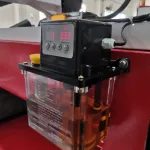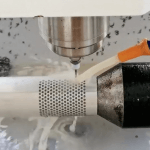5 reason for dimensional instability in CNC machine
Computer Numerical Control (CNC) machine tools have revolutionized manufacturing processes by enabling high precision and efficiency. These advanced machines rely on complex algorithms and automation to execute precise movements and produce intricate components. However, CNC machine tools are susceptible to dimensional instability despite their remarkable capabilities, leading to variations in the produced parts’ dimensions. In this article, we will explore the primary reasons behind dimension instability in CNC machine tools and discuss the potential solutions to mitigate these issues.
Table of Contents
Thermal Effects
One of the primary contributors to dimensional instability in CNC machine tools is thermal effects. During the machining process, various heat sources, such as cutting forces, friction, and the motor’s heat, are generated, leading to thermal expansion in different machine components. The thermal expansion causes changes in the machine’s geometry, resulting in dimensional variations in the produced parts. Additionally, temperature fluctuations in the machining environment can further impact the stability of the machine tool.
To address thermal effects, manufacturers employ different strategies, such as incorporating temperature compensation systems that monitor and adjust the machine’s position based on the detected temperature changes. Thermal isolation techniques, such as thermal barriers and improved cooling systems, can also help minimize the impact of temperature fluctuations on the machine’s performance. The spindle of DOBEMY has its own water-cooling cycle System, which can control the temperature of the spindle during long-term high-speed use and improve processing stability.
Mechanical Elasticity and Compliance
Mechanical elasticity and compliance within the CNC machine tools can contribute to dimensional instability. Despite their robustness, machine structures, and components can deform slightly, undercutting forces and other external factors. These deformations can introduce errors and affect the accuracy of the machine’s movements.
To counteract mechanical elasticity and compliance, manufacturers employ various techniques. One approach involves utilizing high-quality materials with superior stiffness and rigidity for constructing machine structures. Additionally, advanced machine designs with optimized structural elements and improved mechanical configurations can help minimize deformations and enhance the machine’s overall stability. Base processing of DOBEMY CNC machine: high-strength welding of the base, tempering to relieve stress, and three-time processing with a high-precision CNC machine.
Wear and Mechanical Degradation
Over time, CNC machine tools experience wear and mechanical degradation due to the constant interaction of moving parts. Wear can increase clearances between components, resulting in diminished accuracy and repeatability. As clearances widen, the machine’s precise positioning is compromised, leading to dimensional variations in the produced parts.
Regular maintenance and servicing are crucial in mitigating wear and mechanical degradation issues. Lubrication, adjustment of clearances, and replacement of worn-out components are necessary to ensure optimal performance and minimize dimensional instability. Additionally, implementing condition monitoring systems can help detect early signs of wear and degradation, allowing timely interventions to maintain dimensional accuracy.
Backlash and Nonlinearities
Backlash refers to the play or looseness in the mechanical components of CNC machine tools. It occurs when a gap or clearance between mating parts, such as gears, ball screws, and sliding mechanisms. Backlash can introduce positioning errors, leading to dimensional instability in the machined parts.
Manufacturers employ different strategies to mitigate backlash and nonlinearities, including preloading mechanisms, improved design tolerances, and enhanced control algorithms. Preloading reduces or eliminates the backlash by applying a constant force or tension to eliminate gaps between components. Advanced control algorithms compensate for nonlinearities and mitigate their impact on the accuracy and stability of the machine.
Vibration and Chatter
Vibration and chatter are undesirable phenomena that can significantly impact the dimensional stability of CNC machine tools. These dynamic effects occur due to various factors, such as cutting forces, machine imbalances, inadequate damping, and improper cutting parameters. Vibration and chatter can lead to poor surface finish, increased tool wear, and dimensional variations in the machined parts.
To tackle vibration and chatter, machine manufacturers implement several techniques. These include enhancing machine rigidity, optimizing cutting parameters, employing active damping systems, and utilizing vibration analysis tools. By minimizing vibrations and controlling the cutting process, dimensional stability can be improved, resulting in more precise and consistent parts.
Conclusion
While CNC machine tools offer remarkable precision and efficiency, dimensional instability remains a challenge manufacturers strive to overcome. Thermal effects, mechanical elasticity, wear, backlash, and vibration are key contributors to dimensional variations in the produced parts. By employing appropriate strategies, such as temperature compensation, improved machine design, regular maintenance, and vibration control, manufacturers can mitigate these issues and enhance the dimensional stability of CNC machine tools. Continued research and development in this field will further advance the capabilities of CNC machines and ensure consistent quality in manufacturing processes.


